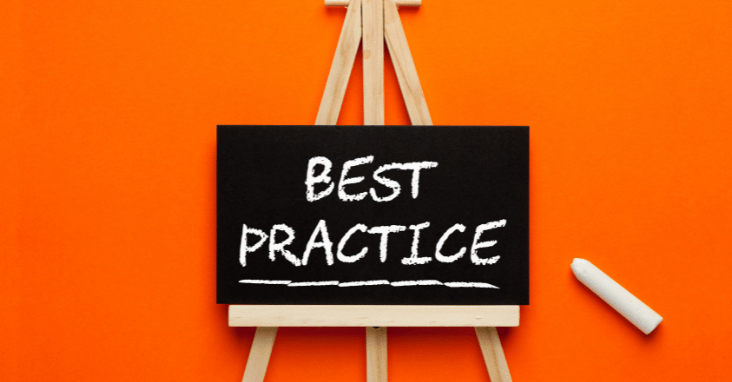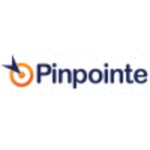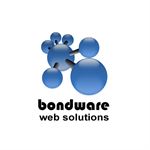Hey there! So you’ve been volunteered to create an email newsletter? Don’t worry, I’ve got your back! In this blog post, we’ll dive into the world of newsletters and explore the best practices that will help you create impactful and successful email campaigns. Let’s get started!
Nowadays, email newsletters have become an essential tool for businesses, organizations, and individuals alike. They provide a direct line of communication with your audience, allowing you to share valuable information, promote products or services, and build strong relationships. But here’s the thing – simply sending out emails won’t guarantee success. It’s crucial to follow best practices to ensure your newsletters stand out in a recipient’s inbox and resonate with your subscribers.

Importance of Following Best Practices
Why bother with email newsletter best practices, you ask? Well, let me tell you. Following best practices is like having a secret recipe for newsletter success. These practices have been tried and tested by experienced marketers and have proven to deliver outstanding results. By implementing them, you’ll maximize the impact of your newsletters, boost engagement, and ultimately achieve your desired goals.
Best practices cover various aspects of newsletter creation, including understanding your target audience, designing visually appealing layouts, crafting compelling content, growing your email subscriber list, complying with legal requirements, and measuring the success of your campaigns. Each of these elements plays a vital role in the effectiveness of your newsletter.
So, throughout this blog post, we’ll explore each of these areas in detail and provide you with practical, actionable tips and insights. By the end, you’ll have a solid understanding of email newsletter best practices and be well-equipped to create newsletters that captivate your audience.
Ready to take your newsletters to the next level? Let’s dive in and learn how to create email campaigns that truly shine!
Actionable takeaway: Understanding the importance of email newsletters and the value of implementing best practices.

Defining the Target Audience
Alright, let’s start by talking about the importance of knowing your target audience when creating your newsletter. Imagine you’re hosting a party – you want to make sure it’s enjoyable for your guests, right? The same principle applies to your newsletters. To make them engaging and relevant, you need to know who you’re talking to.
Understanding your target audience allows you to tailor your content specifically to their interests, preferences, and needs. It helps you create a connection, speak their language, and deliver value that resonates with them. So, how do you go about defining your target audience? Let’s break it down:
Identifying demographics and interests: Start by gathering information about your audience’s demographics, such as age, gender, location, and occupation. This data gives you a basic understanding of who your subscribers are. Additionally, dive deeper into their interests, hobbies, and preferences. Consider conducting surveys, analyzing website analytics, or engaging with your audience on social media to gain insights into what makes them tick.
Tailoring content to the audience: Once you have a clear understanding of your target audience, it’s time to tailor your content to match their interests and preferences. Think about what kind of content would provide value to them. Are they looking for educational articles, product updates, industry news, or exclusive offers? By aligning your content with their needs, you’ll keep them engaged and eager to open your newsletters.
Remember, your audience is not one homogeneous group. There may be different segments within your subscriber base with varying interests and preferences. Consider creating targeted content for specific segments, ensuring that each group receives content that speaks directly to them.
By defining your target audience and crafting content tailored to their needs, you’ll create newsletters that feel personalized, relevant, and captivating. So, take the time to get to know your audience inside out – it’s the first step toward creating impactful newsletters that truly resonate with your subscribers.
Actionable takeaway: Conduct thorough audience research to understand their preferences and interests, enabling you to create personalized and engaging content.

Designing an Engaging Newsletter
Alright, let’s talk about designing an engaging newsletter that catches the eye and keeps your subscribers hooked. Think of your newsletter as a visual representation of your brand and the content you’re sharing. A well-designed newsletter not only looks professional but also enhances the overall user experience. So, let’s explore the key elements of a captivating newsletter design:
Key elements of a newsletter design: Your newsletter design should incorporate elements that make it visually appealing and easy to navigate. Consider using a balanced layout that includes a header with your logo or brand name, clear sections for different content, and a footer with important links or contact information. Break up the content with subheadings, bullet points, and images to make it visually interesting and scannable.
Choosing the right colors, fonts, and images: The colors, fonts, and images you choose for your newsletter play a significant role in conveying your brand personality and capturing attention. Select a color palette that aligns with your brand identity and evokes the desired emotions. Use fonts that are easy to read and consistent with your brand’s style. Incorporate high-quality images that are relevant to your content and help illustrate your message effectively. Do your images have alt text too?
Creating a layout that is easy to read and navigate: Your newsletter should be user-friendly and effortless to navigate. Use a clear hierarchy in your design, with headlines and subheadings that stand out. Maintain a logical flow from one section to the next, guiding readers through your content. Pay attention to the spacing between elements, ensuring sufficient breathing room for a clean and organized look. Don’t forget to optimize your newsletter for mobile devices, as many subscribers access their emails on smartphones or tablets.
By paying attention to these design elements, you’ll create a visually appealing newsletter that draws your subscribers’ attention and encourages them to explore your content. Remember, the design should complement your content and provide a seamless user experience. So, go ahead and unleash your creativity to design a newsletter that stands out from the crowd!
Actionable takeaway: Pay attention to the visual aspects of your newsletter, including design elements and layout, to create a visually appealing and user-friendly experience.

Crafting Effective Newsletter Content
Now that you have a visually appealing newsletter design, let’s shift our focus to the content itself. Crafting compelling and valuable content is key to keeping your subscribers engaged and eager to open your newsletters. Here are some tips to help you create effective newsletter content:
Importance of providing value to email subscribers: Your subscribers are looking for value. They have entrusted you with their email addresses, so it’s essential to deliver content that is informative, entertaining, or useful to them. Whether it’s educational articles, expert tips, exclusive offers, or entertaining stories, make sure your content meets their expectations and provides something worthwhile.
Identifying types of content that work best: Experiment with different types of content to see what resonates best with your audience. This could include articles, videos, infographics, case studies, or interviews. Pay attention to the engagement levels and feedback from your subscribers to identify the content types that generate the most interest and interaction.
Writing compelling email subject lines, and headlines: Your subject line is the first impression your subscribers will have of your newsletter. It should be intriguing, concise, and entice them to open the email. A funny subject line can encourage engagement. Similarly, use compelling headlines within the newsletter itself to grab attention and make readers want to dive into the content. Don’t be afraid to get creative, but make sure your subject lines and headlines accurately represent the content inside.
Optimizing content length and formatting: Keep your content concise and easily scannable. Break up the text into smaller paragraphs and use subheadings, bullet points, and bold or italicized text to highlight key points. Remember, many subscribers skim through emails, so make it easy for them to grasp the main ideas quickly. Also, be mindful of the overall length of your newsletter. If your content is too long, consider breaking it up into multiple sections or linking to a full article on your website.
By providing valuable and engaging content, utilizing attention-grabbing subject lines and headlines, and optimizing the length and formatting, you’ll capture your subscribers’ attention and keep them eagerly anticipating your newsletters. Remember, the content is the heart and soul of your newsletter, so invest time and effort into creating quality content that resonates with your audience.
Actionable takeaway: Pay attention to the visual aspects of your newsletter, including design elements and layout, to create a visually appealing and user-friendly experience.

Building Your Email List
Now that you’ve crafted compelling content, it’s time to focus on growing your email list. After all, the more subscribers you have, the wider your reach and impact. Here are some strategies and best practices to help you build a strong and engaged email list:
Strategies for growing your email list: Start by leveraging your existing platforms and networks. Prominently display opt-in forms for email recipients on your website, blog, and social media profiles, encouraging visitors to subscribe. Offer incentives such as exclusive content, discounts, or free resources in exchange for email addresses. Consider running contests or giveaways to attract new subscribers. Collaborate with other businesses or influencers in your niche to reach new audiences and expand your reach.
Best practices for opt-in forms and landing pages: Make your opt-in forms and landing pages visually appealing and easy to use. Keep the form fields simple, asking for only essential information to minimize friction. Clearly communicate the benefits of subscribing and assure visitors that their information will be protected. Use compelling copy and call-to-action buttons that encourage action. Test different form placements and designs to optimize conversions.
Segmenting your email list: As your list grows, it becomes essential to segment your subscribers based on their preferences, interests, or behavior. Segmenting allows you to deliver targeted content that resonates with specific segments of your audience. You can segment based on demographics, past interactions, purchase history, or preferences indicated during the signup process. Use an email marketing platform that provides robust segmentation features to effectively manage and communicate with different segments.
By implementing these strategies and best practices, you’ll steadily grow your email list with engaged subscribers who are genuinely interested in what you have to offer. Remember, quality is just as important as quantity when it comes to building an email list. Focus on attracting the right audience who will truly benefit from and engage with your newsletters.
Continue to optimize your list-building efforts, regularly assess the effectiveness of your strategies, and adapt as needed to ensure steady growth and engagement with your subscriber base.
Actionable takeaway: Implement effective strategies to grow your email list, optimize your opt-in forms and landing pages, and segment your subscribers to deliver targeted content.

Legal Considerations
As you build and engage with your email list, it’s crucial to be aware of and comply with relevant laws and regulations. Understanding the legal considerations surrounding email marketing helps you maintain a trustworthy reputation and build a solid foundation for your newsletter campaigns. Here are some key points to keep in mind:
Understanding spam laws and regulations: Familiarize yourself with the laws and regulations governing email marketing in your jurisdiction. Different countries may have different rules, such as the CAN-SPAM Act in the United States or the GDPR in the European Union. These laws often require you to obtain explicit consent from subscribers, provide an easy way to unsubscribe, and include your contact information in every email.
Best practices for compliance and opt-in requirements: To ensure compliance, implement best practices for obtaining consent from your subscribers. Use double opt-in, a signup form where subscribers confirm their email addresses before being added to your list. This helps verify their consent and protects you from potential spam complaints and positively affects email deliverability and helps to avoid the spam folder. Clearly communicate what subscribers can expect by signing up for your newsletter, including the type and frequency of emails they’ll receive. Make it easy for subscribers to unsubscribe or manage their preferences at any time by providing an unsubscribe link.
Respect the privacy of your subscribers and handle their personal information responsibly. Regularly review and update your privacy policy to align with privacy regulations and reassure subscribers that their data is safe.
By understanding and adhering to spam laws and best practices, you demonstrate your commitment to ethical email marketing and protect your newsletter from legal issues. Prioritize transparency, consent, and data privacy to foster trust and maintain a positive relationship with your newsletter subscribers only.
Remember, it’s always a good idea to consult with legal professionals or seek guidance specific to your jurisdiction to ensure compliance with relevant laws and regulations.
Now that we’ve covered the legal aspects, let’s move on to measuring the success of your newsletter campaigns and optimizing them for better performance.
Actionable takeaway: Familiarize yourself with spam laws and regulations to ensure compliance, and implement best practices for obtaining subscriber consent.

Measuring the Success of Your Newsletter Campaigns
Measuring the success of your newsletter campaigns is essential to understanding how well your efforts are paying off and identifying areas for improvement. By tracking key metrics and analyzing subscriber engagement, you can optimize your newsletters for better performance. Here’s what you need to know:
Key metrics for measuring newsletter success: Start by tracking key metrics that provide insights into the effectiveness of your newsletters. These include open rates, click-through rates (CTRs), conversion rates, and unsubscribe rates. Open rates indicate how many subscribers opened your email, while CTRs measure the percentage of subscribers who clicked on links within your newsletter. Conversion rates track the number of subscribers who took the desired action, such as making a purchase or signing up for an event. Unsubscribe rates show how many subscribers opted out of your list. By monitoring these metrics over time, you can assess the engagement and overall performance of your newsletters.
Tracking open and click-through rates: To improve open rates, experiment with different subject lines, personalization techniques, or even send times. Analyze which types of content and calls-to-action generate higher click-through rates and adjust your strategies accordingly. Additionally, segmenting your list and delivering targeted content to specific audience segments can boost engagement and CTRs.
Using A/B testing to improve performance: A/B testing involves sending different versions of your newsletter to a small segment of your subscribers to determine which performs better. Test different subject lines, layouts, content formats, or calls-to-action to see which resonates more with your audience. Use the insights gained from A/B testing to refine and optimize your future newsletters.
Analyzing subscriber engagement metrics and feedback: Pay attention to subscriber engagement beyond open and click-through rates. Monitor metrics such as time spent on your website, social media interactions, or replies to your emails. Encourage feedback through surveys or open-ended questions to gain valuable insights directly from your subscribers. Use this feedback to refine your content, address pain points, and continuously improve your newsletter campaigns.
By consistently measuring and analyzing the success of your newsletter campaigns, you gain valuable insights into what works and what doesn’t. This data-driven approach empowers you to make informed decisions, optimize your newsletters for better results, and ultimately provide a more engaging experience for your subscribers.
Now, let’s wrap up with a recap of the newsletter, best practice practices we’ve discussed and some tips for ongoing improvement.
Actionable takeaway: Familiarize yourself with spam laws and regulations to ensure compliance, and implement best practices for obtaining subscriber consent.
Keep Adapting!
Remember, creating an effective newsletter is an ongoing process. Keep learning, adapting, and refining your approach to ensure that your newsletters remain relevant, valuable, and engaging to your subscribers.
Now, armed with these best practices, go ahead and create remarkable newsletters that captivate your audience and drive meaningful results. Happy newsletter crafting!

Newsletter Best Practices – FAQ
What is the purpose of an email newsletter?
An email newsletter serves as a means of direct communication with your audience, allowing you to share valuable information, updates, promotions, and establish a stronger connection with your subscribers. It helps you build brand loyalty, drive traffic to your website or products, and nurture long-term relationships with your audience.
How do I define my target audience for the newsletter?
To define your target audience, start by gathering information about their demographics, such as age, gender, location, and occupation. Additionally, delve into their interests, preferences, and pain points. Conduct surveys, analyze website analytics, or engage with your audience on social media to gain insights. This information will help you tailor your content to their needs and create a more engaging and relevant newsletter.
How can I make my newsletter visually appealing?
To make your newsletter visually appealing, consider key design elements such as choosing the right colors, fonts, and images. Use a balanced layout with clear sections, subheadings, and bullet points. Incorporate visually engaging images and ensure the design is easy to read and navigate. Remember to optimize your newsletter for mobile devices as well.
What type of content should I include in my newsletter?
The content you include in your newsletter should provide value to your subscribers. Consider a mix of educational articles, industry insights, tips and tricks, product updates, exclusive offers, or entertaining stories. Experiment with different types of content to see what resonates best with your audience and aligns with your goals. Listen to feedback from your subscribers and adapt your content strategy accordingly.
How can I grow my email list?
To grow your email list, utilize strategies such as prominently displaying opt-in forms on your website, blog, and social media profiles. Offer incentives like exclusive content, discounts, or free resources to encourage visitors to subscribe. Collaborate with other businesses or influencers in your business niche to reach new audiences. Consistently optimize your opt-in forms and landing pages for better conversions and consider segmenting your list for targeted growth.
What legal considerations should I be aware of when sending newsletters?
When sending newsletters, it’s essential to comply with spam laws and regulations. Familiarize yourself with the laws governing email marketing in your jurisdiction, such as the CAN-SPAM Act or the GDPR. Obtain explicit consent from subscribers, provide easy unsubscribe options, and include your contact information in every email. Respect privacy regulations and handle subscriber data responsibly.
How can I measure the success of my newsletter campaigns?
You can measure the success of your newsletter campaigns by tracking key metrics such as open rates, click-through rates, conversion rates, and unsubscribe rates. Analyze the engagement and interaction of your subscribers with your content. Use A/B testing to compare different versions of your newsletter and refine your strategies. Encourage feedback and listen to your subscribers to continuously improve your newsletters.
These FAQs address common questions related to email newsletters and provide detailed answers to help you navigate the various aspects of creating and optimizing your newsletter campaigns. By understanding the purpose, target audience, design, content, legal considerations, and metrics involved, you’ll be well-equipped to craft effective newsletters that resonate with your subscribers and drive meaningful results.

Bonus: Tools to Enhance Your Newsletter Campaigns
Now that you have a solid understanding of the best practices for creating email newsletters, let’s explore some tools that can further enhance your newsletter campaigns. These tools provide additional functionality and streamline your workflow, making it easier to design, manage, and measure the success of your newsletters. Here are a few popular options:
1. Email Marketing Platforms: Email marketing platforms like Mailchimp, Constant Contact, and Sendinblue offer comprehensive solutions for creating and managing your newsletters. These platforms provide intuitive drag-and-drop editors, pre-designed newsletter templates, and automation features. They also offer list management, subscriber segmentation, and detailed analytics to track the performance of your campaigns.
2. Survey Tools: Survey tools such as SurveyMonkey and Google Forms can help you gather valuable feedback and insights from your subscribers. Use surveys to understand customers and their preferences, gather suggestions, or collect data for segmentation. These tools provide easy-to-use interfaces and customizable survey templates, making it simple to create and distribute surveys to your audience.
3. A/B Testing Tools: A/B testing tools like Optimizely and Google Optimize allow you to conduct experiments and optimize your newsletters based on data-driven insights. Test different subject lines, layouts, or calls-to-action to identify the most effective elements. These tools provide statistical analysis and help you make informed decisions to improve the performance of your newsletters.
4. Analytics Tools: Integrating Google Analytics with your email marketing platform provides a comprehensive view of the impact your newsletters have on website engagement and conversions. It allows you to track metrics such as website traffic, user behavior, and conversions driven by your newsletters. Use this data to gain deeper insights into subscriber interactions and refine your newsletter strategies accordingly.
By utilizing these tools, you can streamline your efforts, gain valuable insights, and further optimize your newsletter campaigns for maximum impact. Experiment with different tools and techniques to find the ones that work best for you, and continue to evolve your newsletters to deliver exceptional experiences for your subscribers.















